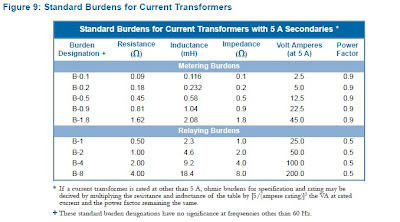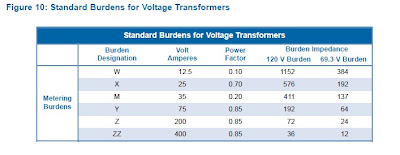How Instrument transformer contributes to system losses?
Like any other transformer in general, Instrument transformers are intended to convert current or voltage from the high level in the transmission and distribution systems to the low levels that can be used by low voltage metering devices. Three primary applications for which instrument transformers are usually known: metering (for energy billing and revenue purposes); protection control (for system protection and protective relaying function); and load survey (for economic management of industrial loads).
The type of instrument transformer to be use can vary significantly depending on the necessities for those applications, the instrument transformer design and construction can be quite different. In general, the metering instrument transformers need high accuracy in the range of normal operating voltage and current. Protection instrument transformers need linearity in a wide range of voltages and currents.
During system fault, overvoltage transients, or any other disturbances, the output of the instrument transformer is used by a protective relay to initiate an suitable action (close or open a breaker, reconfigure the system, etc.) to alleviate the disturbance and protect the rest of the power system.
The most common and economic way to detect a disturbance is by using instrument transformers. Typical output levels of instrument transformers are 1-5 amperes and 115-120 volts for current transformers and voltage transformers, respectively. There are several classes of accuracy for instrument transformers defined by the international standards like IEEE, CSA, IEC, and ANSI.
Burdens
The errors in ratio and phase angle depend on the impedance connected to the secondary of the transformer. This impedance is commonly referred to as “burden”. The calculations required for determining the performance of a transformer when different burdens are applied are beyond the scope of this discussion. Therefore, the standard burdens as outlined in IEEE C57.13 are used to represent typical service conditions. Each transformer is rated according to its performance at these standard burdens.
The errors in ratio and phase angle depend on the impedance connected to the secondary of the transformer. This impedance is commonly referred to as “burden”. The calculations required for determining the performance of a transformer when different burdens are applied are beyond the scope of this discussion. Therefore, the standard burdens as outlined in IEEE C57.13 are used to represent typical service conditions. Each transformer is rated according to its performance at these standard burdens.
Current Transformer Burden
Many current transformers supply only a limited number of watt-hour meter elements with a limited number of runs. For metering and relaying applications, IEEE C57.13 has established the standard burdens as given in Figure 9.
Many current transformers supply only a limited number of watt-hour meter elements with a limited number of runs. For metering and relaying applications, IEEE C57.13 has established the standard burdens as given in Figure 9.
Voltage Transformer Burden
The standard burdens to be used for testing and comparing voltage transformers are rated at 120 volts and at 69.3 volts. IEEE C57.13 specifies that the 120 volt-rated burden will be used for any transformer with the secondary voltage in the range of 115 to 120 volts, while the 69.3 volt burden will be used for any transformer with the secondary voltage in the range of 65 to 72 volts. This means that the actual volt amperes in the burden in a given test may be different than the nominal value of the burden in volt amperes. For instance, if the standard burden is 25 volt amperes, the actual burden when it is used for testing a transformer with 115 volt secondary is (115/120)2 or .918 times the nominal value of 25.
The standard burdens to be used for testing and comparing voltage transformers are rated at 120 volts and at 69.3 volts. IEEE C57.13 specifies that the 120 volt-rated burden will be used for any transformer with the secondary voltage in the range of 115 to 120 volts, while the 69.3 volt burden will be used for any transformer with the secondary voltage in the range of 65 to 72 volts. This means that the actual volt amperes in the burden in a given test may be different than the nominal value of the burden in volt amperes. For instance, if the standard burden is 25 volt amperes, the actual burden when it is used for testing a transformer with 115 volt secondary is (115/120)2 or .918 times the nominal value of 25.
The burdens rated 69.3 volts have impedance only one-third of that of burdens rated 120 volts and they should not be used in testing or rating transformers rated at 115 to 120 volts. Transformers rated at 115 or 120 volts should be treated as 115 or 120 volt transformers, and if they are actually used at reduced voltage, the performance will not be different if the 120 volt burden is used as a basis for performance. This is because the performance of a transformer down to voltages of about 5% of its rating is not significantly different from the performance at 100% voltage. Refer to Figure 10 for standard burdens for voltage transformers as outlined in IEEE C57.13.
A number of considerations are involved in selecting proper instrument transformers. Many of the transformer types have similar characteristics, but each type has its own unique combination of features that best meet the application for which it is designed.


Comments
Post a Comment